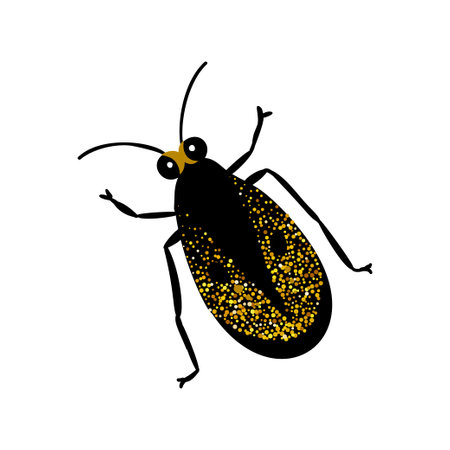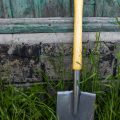Introduction to Wildlife Gardens in the UK
Wildlife gardens are a cherished part of many British homes, offering a sanctuary for native species and promoting a healthy, balanced ecosystem. Unlike traditional manicured lawns, a wildlife garden is designed with nature in mind, featuring diverse habitats such as wildflower meadows, native hedgerows, ponds, and log piles. These gardens are intentionally less tidy, allowing plants to grow freely and providing shelter and food for birds, insects, hedgehogs, and other local wildlife. By incorporating native plant species and avoiding excessive use of chemicals or artificial interventions, wildlife gardens play a crucial role in supporting pollinators like bees and butterflies, which are vital to the UKs biodiversity. In essence, a true wildlife garden not only brings natural beauty into our outdoor spaces but also helps counteract the decline in native flora and fauna by creating safe havens for them to thrive.
2. The Role of Pollinators in British Gardens
Pollinators such as bees, butterflies, hoverflies, and moths play a vital role in the health and vibrancy of UK gardens. These creatures not only assist with the pollination of flowers but also contribute to the wider biodiversity found in wildlife-friendly spaces. In Britain, where traditional cottage gardens and wildflower meadows are part of the landscape, supporting pollinators is essential for maintaining both beauty and balance.
How Pollinators Support Biodiversity
When pollinators visit flowers to collect nectar or pollen, they transfer pollen between plants. This process helps fruits, vegetables, and ornamental plants to set seed and thrive. The presence of diverse pollinator species ensures that a wide range of plants can reproduce successfully, supporting food chains from insects up to birds and small mammals.
Main Types of Pollinators in UK Gardens
| Pollinator | Key Features | Contribution to Garden Ecosystem |
|---|---|---|
| Bees (Bumblebees & Solitary Bees) | Furry bodies, social or solitary habits | Main pollinators for fruit trees, herbs, wildflowers; crucial for seed set |
| Butterflies | Colourful wings, diurnal activity | Aid pollination of open-faced flowers; indicator species for healthy gardens |
| Hoverflies | Wasp mimics, hovering flight | Pollinate flat-topped flowers; larvae help control aphids naturally |
| Moths | Nocturnal, often overlooked | Pollinate night-blooming plants; food source for bats and birds |
The Wider Impact on Local Ecosystems
Supporting pollinators doesn’t just benefit your own garden. These creatures move between gardens, parks, allotments, and countryside hedgerows across the UK. By encouraging a variety of flowering plants and reducing the use of pesticides, gardeners can help build corridors of habitat that allow pollinator populations to flourish. In turn, this increases resilience against pests and diseases while enhancing the beauty of neighbourhood green spaces.

3. Understanding Deadheading: Benefits and Drawbacks
Deadheading is a popular practice in British gardens, involving the removal of faded or spent flowers from plants. This technique is often used to encourage further blooming, keep borders looking tidy, and maintain the overall health of flowering plants. In the UK, many gardeners deadhead roses, dahlias, and bedding plants as part of routine garden care.
What is Deadheading?
Deadheading means snipping off old flower heads before they set seed. The idea is simple: by removing these spent blooms, the plant can redirect energy into producing new flowers rather than seeds. This keeps the garden vibrant for longer and can improve the appearance of flowerbeds throughout summer.
Common Practices in British Gardens
Across the UK, deadheading is often done using secateurs or simply pinching off heads with fingers. It’s especially common in cottage gardens, formal borders, and even small urban plots. For many British gardeners, this ritual is both practical and meditative, often done during evening strolls around the garden.
Benefits for Plants
The main benefit of deadheading is prolonged flowering. Plants like geraniums, cosmos, and sweet peas will reward regular deadheading with a continual flush of new blooms. This practice also prevents self-seeding where it’s not wanted and can help reduce fungal diseases by removing decaying petals.
Potential Drawbacks for Wildlife
However, there are some drawbacks, particularly for wildlife gardens focused on supporting pollinators and birds. Many insects rely on fading blooms for pollen and nectar late in the season. Additionally, seed heads provide vital food for birds such as goldfinches and greenfinches through autumn and winter. Overzealous deadheading may remove these resources before wildlife has benefited fully.
Finding Balance
The key for UK gardeners interested in biodiversity is balance. Selectively deadheading some areas while allowing others to go to seed can support both a long-lasting display and local wildlife. By understanding when and where to deadhead, gardeners can create beautiful spaces that also nurture pollinators and birds.
4. Striking a Balance: Deadheading Versus Biodiversity
In UK wildlife gardens, finding harmony between a tidy appearance and supporting local biodiversity can be challenging. Many gardeners love the look of well-kept borders, but constant deadheading may reduce vital resources for pollinators and birds. Here are some practical ways to maintain an attractive garden while also nurturing the creatures that call it home.
Practical Tips for Balancing Aesthetics and Habitat
- Selective Deadheading: Instead of deadheading every flower, choose to leave some spent blooms on less prominent plants or in wilder corners. This provides seeds for birds and shelter for insects without compromising your main displays.
- Staggered Approach: Deadhead in phases. Allow certain areas to go to seed after their peak, especially towards late summer, giving wildlife a chance to benefit from the changing habitat.
- Designated Wild Patches: Set aside small sections where you do minimal maintenance. These pockets can become mini-refuges for bees, butterflies, and other beneficial insects.
- Choose Pollinator-Friendly Plants: Incorporate native species like foxgloves, primroses, and lavender that support pollinators even if left un-deadheaded at times.
Table: Deadheading versus Biodiversity Benefits
| Garden Practice | Visual Effect | Biodiversity Impact |
|---|---|---|
| Regular Deadheading | Tidy, continuous blooms | Fewer seeds and habitats for wildlife |
| Selective Deadheading | Main areas neat; wild patches look natural | Provides food and shelter for insects & birds |
| No Deadheading | Naturalistic, sometimes untidy look | Maximises wildlife benefits |
Cultural Considerations in UK Gardens
The classic British garden often values orderliness, but theres growing appreciation for spaces that blend beauty with ecological function. Embrace a bit of imperfection by allowing seed heads to remain through autumn—goldfinches and other birds will thank you, and frost-kissed stems add winter interest. By balancing neatness with wild patches, you’ll create a garden that’s both pleasing to the eye and rich in life.
5. Best Practices for British Wildlife Gardeners
Embrace a Balanced Approach
In the UK, wildlife gardens thrive when gardeners strike a careful balance between maintaining visual appeal and supporting biodiversity. Instead of deadheading every faded bloom, consider leaving some seed heads through autumn and winter. These provide vital food for birds like finches and sparrows, while also offering shelter for insects.
Choose Native Plants
Opt for native wildflowers such as oxeye daisy, knapweed, and field scabious. These species are well adapted to local conditions and are particularly attractive to British pollinators. Mixing native perennials with traditional border favourites ensures your garden supports bees, butterflies, and hoverflies year-round.
Create Varied Habitats
Diversify your borders by including a mix of heights, textures, and flowering times. Layering plants allows different species to thrive—groundcover for beetles, tall spires for bees, and seed heads for birds. Leaving a few untidy corners or log piles can encourage hedgehogs, frogs, and beneficial insects to take up residence.
Practical Deadheading Tips
- Deadhead selectively: Remove spent blooms from showier plants where you want continuous colour but leave others to go to seed.
- Time it right: Delay major cutting back until late winter or early spring so wildlife can benefit from shelter and food.
- Avoid chemicals: Reduce or eliminate pesticide use to keep pollinator populations healthy.
Engage with the Community
Join local gardening groups or participate in initiatives like the RHS Wild About Gardens scheme. Sharing experiences with fellow gardeners helps spread best practices and encourages more people to create pollinator-friendly spaces across neighbourhoods.
6. Seasonal Tips for Supporting Pollinators Year-Round
Spring: Early Food Sources and Gentle Deadheading
As British gardens wake up in spring, focus on planting native flowers such as primroses, cowslips, and bluebells. These early bloomers provide vital nectar for emerging bees and butterflies. Avoid deadheading spring bulbs like daffodils until their leaves have fully died back, so the plants can store energy for next year. Leave some dandelions and forget-me-nots as they offer essential pollen when little else is available.
Summer: Abundant Blooms and Selective Deadheading
During summer, your garden bursts with life. Lavender, foxgloves, alliums, and single-flowered roses are excellent for attracting a wide variety of pollinators. Deadhead faded blooms on bedding plants to encourage further flowering, but leave some seed heads on perennials like teasels and sunflowers; these not only feed birds but also provide shelter for insects. Remember to water flowers during dry spells and avoid pesticides that can harm beneficial bugs.
Autumn: Extending the Season for Pollinators
In autumn, late-flowering plants such as sedums, asters, and ivy become important nectar sources for pollinators preparing for winter. Reduce deadheading in early autumn to allow seed heads to develop; these offer food for goldfinches and shelter for overwintering insects. Allow fallen leaves to gather in quiet corners—they create natural mulch and hiding places for wildlife.
Winter: Shelter and Planning Ahead
Winter is a time of rest in the wildlife garden, but you can still support pollinators by leaving hollow stems, old flower heads, and piles of logs or stones undisturbed as hibernation sites. Plan ahead by ordering seeds of native wildflowers like oxeye daisies and knapweed to sow in spring. Consider installing bee hotels or creating small brushwood piles to give solitary bees a safe haven through the colder months.
General Guidance: Balance and Observation
The key to supporting pollinators throughout the UK seasons is balance. Observe which flowers attract the most bees and butterflies in your area—often simple, open blooms are best. Practise selective deadheading rather than clearing everything away at once, allowing some areas of your garden to remain wild. By providing a continuous supply of food and shelter year-round, you’ll create a haven where both pollinators and biodiversity thrive together.


